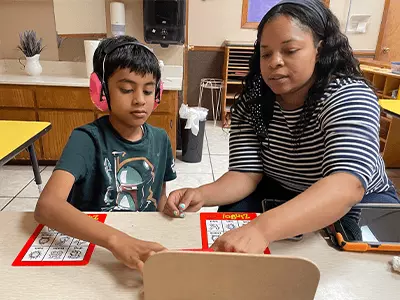APPLIED BEHAVIOR ANALYSIS AND THE CLASSROOM
Rooted Life Montessori is a montessori Preschool and Elementary school in Burleson, TX. Our staff works with students to help develop a learning style that suits their specific needs. In our classroom, we methods to help students including Applied Behavior Analysis (ABA Therapy). RLM does NOT provide ABA Therapy. Our teachers use the methods of this therapy within their classrooms as a supplement to their teaching style. If your child needs ABA Therapy, we can recommend you to a certified ABA provider. The ABA method is a term that covers styles of teaching such as Verbal Behavior (VB), Natural Environment Teaching (NET), and Discrete Trial Training (DTT). ABA professionals mainly work in the areas of behavior reduction or skill acquisition.
According to Angie Sanders of Autism Garden:
ABA Therapy is an umbrella term that covers many styles of teaching/treatment, such as Verbal Behavior (VB), Natural Environment Teaching (NET), and Discrete Trial Training (DTT). ABA professionals mainly work in the areas of behavior reduction or skill acquisition.
ABA Therapy focuses on understanding behavior by its function, combined with examining the environment in order to develop a comprehensive strategy for behavior reduction.
ABA Therapy incorporates behavioral techniques such as reinforcement, prompting, consistent consequences, and extinction. Strengths are generalized and expanded upon, and deficits are replaced with skills in order to help the individual be more successful in their environment.
Being a behavioral therapeutic method, ABA Therapy focuses on what is observable and measurable. Precise and frequent data collection drives the course of treatment. ABA Therapy can take place in the home setting, school setting, community setting(s), or at a center/clinic. ABA Therapy is usually provided by ABA therapists, and the therapists should be supervised by a Consultant (usually a Board Certified Behavior Analyst).
Operant Conditioning states that behaviors that contact reinforcement are strengthened, and behaviors that contact punishment are weakened. ABA is the process of manipulating the environment (what the individual finds reinforcing or punishing) in order to increase or decrease behaviors.
Applied Behavior Analysis (ABA) has become widely accepted as one of THE most effective treatments for behavior change, although many people still think ABA treatment is only for individuals with Autism. ABA is much broader than that, and should not be reduced down to only being effective with one specific population.
Examples of ABA Therapy goals include:
Increase attending behaviors
Improve fine motor skills
Extinguish self-injurious behaviors (SIB’s)
Reduce tantrumming behavior
Increase play behaviors with siblings
Generalize skills across environments
Successful homework completion
Increasing compliance to adult directives
Provide parent education in the area of behavior management
Intensive, comprehensive treatment (often appropriate for early intervention learners presenting with broad skill deficits and intensive problem behavior)
Brief, focused treatment (often appropriate for advanced learners presenting with a few areas of skill deficit, or moderate problem behavior)


